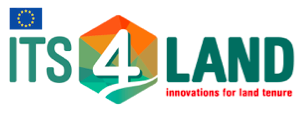Fly and Create
All three East African countries and accompanying use cases bring different UAV design and operational challenges. UAVs have reached a certain maturity for professional civil applications. Regarding image-based land cover or land use mapping, UAVs can be considered as being established tools for the data acquisition of smaller areas (up to a few hundreds hectares, see Colomina and Molina, 2014). The main advantages over traditional (manned) airborne-based mapping are: i) flexibility – easily deployable and realisation of individual flight patterns; ii) unrivalled image resolution – a ground pixel size of 5cm can easily be achieved; iii) ease of use – with a small training effort, state-of-the-art devices can be operated even by laymen. However, compared to established workflows based on manned airborne photography, some issues need to be considered and may even hinder an efficient use of UAVs in practice. First, regulations: in many countries no regulations are in place, and the UAV user needs to work on an exemption basis. This means that flights might not be possible, or that the data captured has no legal status. Second, ground truthing: because of weight and cost restrictions, sensor devices used in UAVs (camera, positioning) are of much lower quality compared to professional sensors employed in manned airborne systems. This has as the consequence that in order to reach the best accuracies for the final mapping product, significant work concerning signalisation and measurement of ground control points is necessary. Although producers of UAVs are beginning to implement accurate differential GNSS devices in their devices (e.g. http://www.mavinci.de/en/siriuspro or https:// www.sensefly.com/drones/ebee-rtk.html) and promise sub-decimetre accuracy, still some ground measurements are necessary with those approaches. The first objective is to analyse the framework of practical UAV operations with a focus on sub Saharan Africa, concerning the current and future status of regulations. The second objective is to develop workflows for land tenure recording and analyse methods to mitigate the need for ground surveys – that ultimately feed into WP5. This WP requires travel activities for piloting and demonstration activities. The fieldwork missions are combined with regular project meetings: UAV flights can also be performed by INES, BD, TUK individually.
Ongoing work:
More than 20 different UAV data collection flights in East Africa shaped the work of the ‘Fly and Create’ work package during 2018. The its4land team prepared a video that takes you on a visual journey to our latest UAV activities in Rwanda, Kenya and Zanzibar including snapshots of the ground measurement, flight preparations and the data acquisition flights.
Watch here the 3min medley called: “its4land project: UAV data acquisition flights in Africa to secure land rights”

Recent Comments